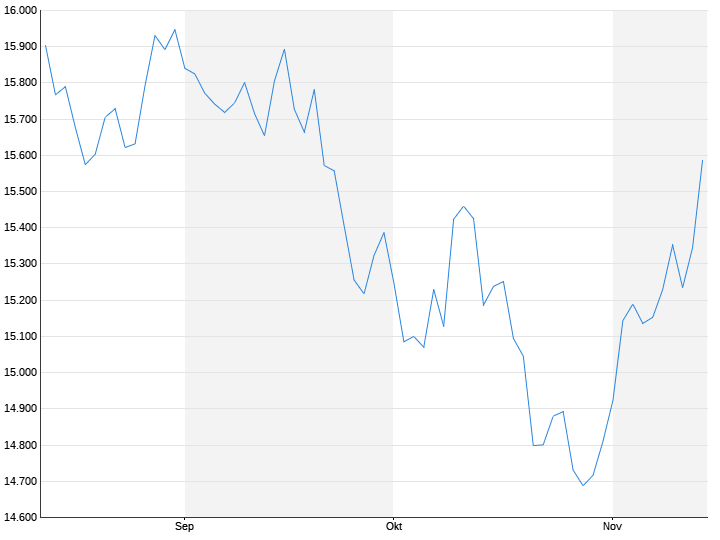Investors go into rally mode
US inflation brings the longed-for “positive surprise”
November 14, 2023, 6:35 p.m
Listen to article
This audio version was artificially generated. More info | Send feedback
In the USA, the rise in consumer prices continues to weaken. Hardly anyone on the stock exchanges now sees any reason for the US Federal Reserve to increase interest rates again. The scenario of low inflation and stable growth is creating a buying frenzy.
Inflationary pressure in the USA eased noticeably in October, dispelling fears of interest rate hikes on the financial markets. The inflation rate fell from 3.7 to 3.2 percent, as the Labor Department in Washington announced. Economists only expected a decline to 3.3 percent. On the stock exchanges, investors turned on the turbo and filled their purchase lists. “This is the positive surprise that the market was longing for,” says Thomas Altmann from QC Partners: For the first time this year, prices stagnated month-on-month,
In Frankfurt, the German stock market barometer DAX rose by 1.8 percent to 15,614 points. The upswing on the German market was led by the so-called fallen angels, i.e. stocks that had suffered particularly badly from rising interest rates. The Euro Stoxx 50 rose by 1.4 percent to 4292 points. Yields on the bond market fell and the US dollar weakened significantly. Investors on Wall Street also got into a buying mood. “These numbers indicate that the Fed has nothing left to do in terms of monetary policy,” said Thomas Hayes of private equity firm Great Hill Capital. The central bankers have achieved their goal – declining inflation and a cooling labor market without the economy weakening too much.
+++ Read the highlights of the German Stock Exchange Day here +++
For the US Federal Reserve, consumer prices are an important benchmark when setting interest rates. It wants to push the inflation rate down to the target of two percent and, after a series of increases, recently kept interest rates stable in the range of 5.25 to 5.50 percent for two meetings in a row. On the futures markets, the probability of a further increase is now considered very low at just under ten percent. It is also expected that there will be interest rate cuts from May onwards.
Expert: Housing is the ultimate price driver
“From the perspective of the US Federal Reserve, developments are probably going in the right direction,” said Helaba economist Ulrich Wortberg. But the all-clear cannot yet be given because the Fed’s inflation target has not yet been reached. The monetary authorities also pay particular attention to so-called core inflation, which excludes the volatile prices for energy and food. This rate surprisingly fell in October – to 4.0 percent. Experts had expected it to settle at the September value of 4.1 percent.
Even though the central bank recently paused, it left the option of a further interest rate increase open. However, Fed Chairman Jerome Powell also signaled that the central bank could now act more cautiously after its aggressive series of hikes.
“Today’s inflation numbers take further pressure off the Fed, especially the fact that the slight acceleration in core inflation that was observed in August and September has not continued,” according to the analysis by Commerzbank economists Christoph Balz and Bernd Weidensteiner.
According to LBBW economist Dirk Chlench, a closer analysis of the fresh figures reveals that the inflation rate after removing the housing component is only 1.5 percent: “This illustrates that the costs of housing are the last remaining price driver.” Since the decline in house prices and the stagnation of asking rents suggest that the upward trend in housing prices will ease, the inflation rate could fall to 2.0 percent within twelve months. This would then be a precise landing for the Fed.
